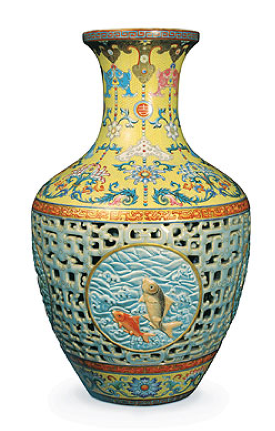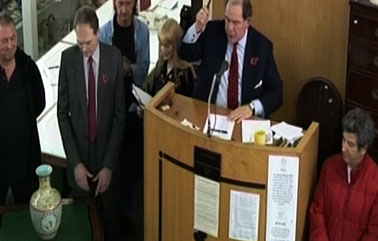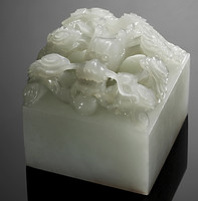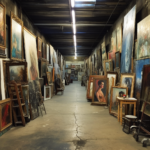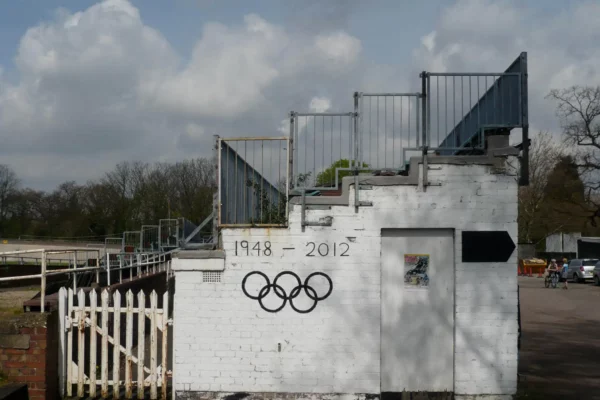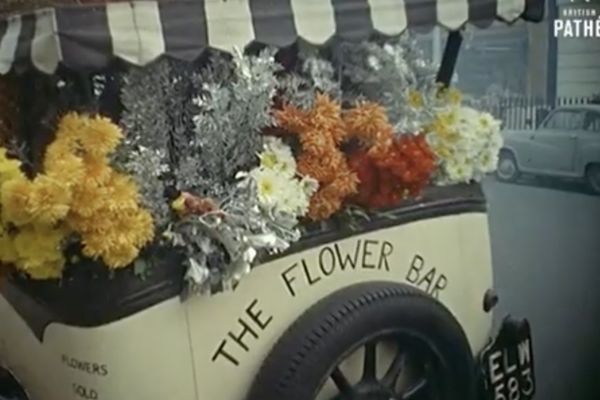You might want to check the attic to make sure you don’t have any ceramic vases lying around that could be worth oh say, £51 million. This is the price that a vase from 18th century China fetched for after an unsuspecting brother and sister decided to hawk it at an auction in west London yesterday. The 16-inch high pottery vase which sat gathering dust on top of a bookshelf in a modern family home in Pinner, North London, dates back to the 1700s, during the reign of the Qianlong Emperor. The intricately designed object has been identified as a work made from the Imperial kilns and now becomes the most expensive piece of oriental art ever sold. The brother and sister had inherited the vase from a deceased relative and had no idea how much the vase was worth until they brought it to Bainbridge’s auction house in Ruislip, West London after deciding to do a clear-out of their ordinary bungalow home.
Not even experts had predicted such monumental numbers. Before a bidding war broke out between four people in the room and three via telephone, the value had been estimated between £800,000 and £1.2 million. After arriving at the auction house as part of a job-lot, along with other modest antiques that had been sitting in the siblings’ home since the 1930s, the porcelain vase’s details were soon circulated around the world. Taiwan porcelain vases similar to this one, were shown in the exhibition, “Stunning Decorative Porcelains from the Chienlung Reign,” at the National Palace Museum, Taiwan, in 2008. The piece has a pierced double-wall body with roundels of fish.
Collector Wes Jefferson, who attended the record-breaking auction, said: “They started bidding at £800,000, but no one placed a bid, so they reduced it to £500,000. From there, it quickly shot up to £20million. Then the bids were going up in £2million intervals, and after just 20 minutes it had reached £43million. A huge cheer went up in the room. Everyone was stunned.”
The anonymous buyer, thought to be a collector from Beijing, sat on a gilded sofa at the front in a black jacket and refused to comment after his historical bid. The sale breaks the record formerly set by an ancient Chinese scroll which sold for £37 million and the auctioning industry has been further blindsided by the fact that the vase wasn’t even sold at Christie’s or Sotheby’s. It was instead a provincial and far-less reputable London auction house that pocketed over £8 million from the sale. Auctioneer Peter Bainbridge admitted when the bid reached £43 million, “I rather lost my way”.
A friend said of the new millionaire brother and sister duo, “They had no idea what they had. They were hopeful but they didn’t dare believe until the hammer went down. When it did, the sister had to go out of the room and have a breath of fresh air.”
Yesterday at Bonhams, this 18th-century white jade seal commissioned by the Qianlong Emperor sold for 2.7 million pounds to a Beijing-based buyer in the room against competition from two other Asian bidders.
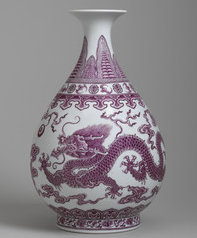 Earlier in the week, this Eskenazi porcelain vase, dating from the reign of the Emperor Yongzheng, painted with a dragon in purple enamels sold for about the asking price of $25 million in an exhibition of Chinese masterworks. It is the sole survivor of a group of puce-decorated wares made in the Imperial palace, Beijing, from 1723 to 1735. It’s been a good week for Asian art!
Earlier in the week, this Eskenazi porcelain vase, dating from the reign of the Emperor Yongzheng, painted with a dragon in purple enamels sold for about the asking price of $25 million in an exhibition of Chinese masterworks. It is the sole survivor of a group of puce-decorated wares made in the Imperial palace, Beijing, from 1723 to 1735. It’s been a good week for Asian art!
The heart-warming story of the lost vase comes as the Asian Art in London event finishes up its last two days in Dover Street (finishes on Saturday, 13th November). It seems like it might be an idea to brush up on our knowledge of oriental fine art and antiques in case you might come across a dusty vase in the attic looking just like one of these…


